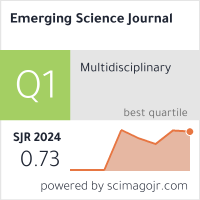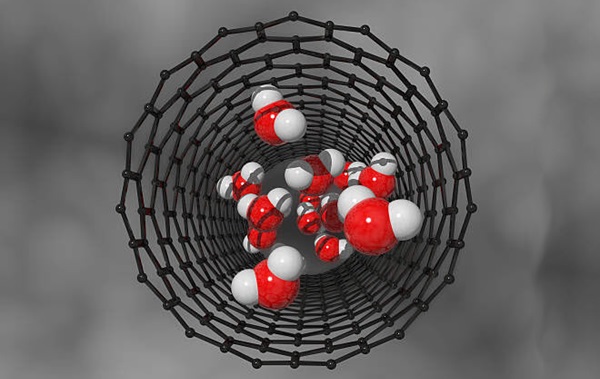HSTCN-NuSVC: A Homogeneous Stacked Deep Ensemble Learner for Classifying Human Actions Using Smartphones
Downloads
Doi:10.28991/ESJ-2025-09-01-026
Full Text:PDF
Downloads
Zhai, Y., Nasseri, N., Pöttgen, J., Gezhelbash, E., Heesen, C., & Stellmann, J. P. (2020). Smartphone Accelerometry: A Smart and Reliable Measurement of Real-Life Physical Activity in Multiple Sclerosis and Healthy Individuals. Frontiers in Neurology, 11. doi:10.3389/fneur.2020.00688.
Dhiman, C., & Vishwakarma, D. K. (2019). A review of state-of-the-art techniques for abnormal human activity recognition. Engineering Applications of Artificial Intelligence, 77, 21–45. doi:10.1016/j.engappai.2018.08.014.
Li, K., Wu, J., Zhao, X., & Tan, M. (2019). Real-Time Human-Robot Interaction for a Service Robot Based on 3D Human Activity Recognition and Human-Mimicking Decision Mechanism. 8th Annual IEEE International Conference on Cyber Technology in Automation, Control and Intelligent Systems, CYBER 2018, 2018, 498–503. doi:10.1109/CYBER.2018.8688272.
danova, M., Voronin, V. V., Semenishchev, E., Ilyukhin, Y. V., & Zelensky, A. (2020). Human activity recognition for efficient human-robot collaboration. Artificial Intelligence and Machine Learning in Defense Applications II, 16. doi:10.1117/12.2574133.
Anagnostis, A., Benos, L., Tsaopoulos, D., Tagarakis, A., Tsolakis, N., & Bochtis, D. (2021). Human activity recognition through recurrent neural networks for human–robot interaction in agriculture. Applied Sciences (Switzerland), 11(5), 2188. doi:10.3390/app11052188.
Tharwat, A., Mahdi, H., Elhoseny, M., & Hassanien, A. E. (2018). Recognizing human activity in mobile crowdsensing environment using optimized k-NN algorithm. Expert Systems with Applications, 107, 32-44. doi:10.1016/j.eswa.2018.04.017.
Batool, M., Jalal, A., & Kim, K. (2019). Sensors technologies for human activity analysis based on SVM optimized by PSO algorithm. International Conference on Applied and Engineering Mathematics (ICAEM-2019), 145-150. doi:10.1109/ICAEM.2019.8853770.
Ansari, G., Ahmad, T., & Doja, M. N. (2019). Hybrid filter–wrapper feature selection method for sentiment classification. Arabian Journal for Science and Engineering, 44, 9191-9208. doi:10.1007/s13369-019-04064-6.
Mohammed, A., & Kora, R. (2023). A comprehensive review on ensemble deep learning: Opportunities and challenges. Journal of King Saud University - Computer and Information Sciences, 35(2), 757–774. doi:10.1016/j.jksuci.2023.01.014.
Ioffe, S., & Szegedy, C. (2015). Batch normalization: Accelerating deep network training by reducing internal covariate shift. 32nd International Conference on Machine Learning, ICML 2015, 6-11 July, 2015, Lille, France.
Anguita, D., Ghio, A., Oneto, L., Parra, X., & Reyes-Ortiz, J. L. (2013, April). A public domain dataset for human activity recognition using smartphones. ESANN 2013 proceedings, European Symposium on Artificial Neural Networks, Computational Intelligence and Machine Learning, 24-26 April, 2013, Bruges, Belgium.
Mohsen, S., Elkaseer, A., Scholz, S.G. (2022). Human Activity Recognition Using K-Nearest Neighbor Machine Learning Algorithm. Sustainable Design and Manufacturing. KES-SDM 2021. Smart Innovation, Systems and Technologies, 262, Springer, Singapore. doi:10.1007/978-981-16-6128-0_29.
Kee, Y. J., Zainudin, M. S., Idris, M. I., Ramlee, R. H., & Kamarudin, M. R. (2020). Activity recognition on subject independent using machine learning. Cybernetics and Information Technologies, 20(3), 64-74. doi:10.2478/cait-2020-0028.
Hamad, R. A., Kimura, M., Yang, L., Woo, W. L., & Wei, B. (2021). Dilated causal convolution with multi-head self-attention for sensor human activity recognition. Neural Computing and Applications, 33(20), 13705–13722. doi:10.1007/s00521-021-06007-5.
Han, C., Zhang, L., Tang, Y., Huang, W., Min, F., & He, J. (2022). Human activity recognition using wearable sensors by heterogeneous convolutional neural networks. Expert Systems with Applications, 198, 116764. doi:10.1016/j.eswa.2022.116764.
Hernandez, F., Suarez, L. F., Villamizar, J., & Altuve, M. (2019). Human Activity Recognition on Smartphones Using a Bidirectional LSTM Network. 2019 XXII Symposium on Image, Signal Processing and Artificial Vision (STSIVA), 1–5. doi:10.1109/stsiva.2019.8730249.
Pan, J., Hu, Z., Yin, S., & Li, M. (2022). GRU with Dual Attentions for Sensor-Based Human Activity Recognition. Electronics (Switzerland), 11(11). doi:10.3390/electronics11111797.
Nair, N., Thomas, C., & Jayagopi, D. B. (2018). Human Activity Recognition Using Temporal Convolutional Network. Proceedings of the 5th International Workshop on Sensor-Based Activity Recognition and Interaction, 1–8. doi:10.1145/3266157.3266221.
Raja Sekaran, S., Pang, Y. H., Ling, G. F., & Yin, O. S. (2022). MSTCN: A multiscale temporal convolutional network for user independent human activity recognition. F1000Research, 10, 1261. doi:10.12688/f1000research.73175.2.
Liu, Z., Li, S., Hao, J., Hu, J., & Pan, M. (2021). An Efficient and Fast Model Reduced Kernel KNN for Human Activity Recognition. Journal of Advanced Transportation, 2026895. doi:10.1155/2021/2026895.
Khan, Z. N., & Ahmad, J. (2021). Attention induced multi-head convolutional neural network for human activity recognition. Applied Soft Computing, 110, 107671. doi:10.1016/j.asoc.2021.107671.
Sharen, H., Jani Anbarasi, L., Rukmani, P., Gandomi, A. H., Neeraja, R., & Narendra, M. (2024). WISNet: A deep neural network based human activity recognition system. Expert Systems with Applications, 258, 124999. doi:10.1016/j.eswa.2024.124999.
Tang, Y., Teng, Q., Zhang, L., Min, F., & He, J. (2021). Layer-Wise Training Convolutional Neural Networks with Smaller Filters for Human Activity Recognition Using Wearable Sensors. IEEE Sensors Journal, 21(1), 581–592. doi:10.1109/JSEN.2020.3015521.
Zhang, X., Wong, Y., Kankanhalli, M. S., & Geng, W. (2019). Hierarchical multi-view aggregation network for sensor-based human activity recognition. PLoS ONE, 14(9). doi:10.1371/journal.pone.0221390.
Huang, W., Zhang, L., Gao, W., Min, F., & He, J. (2021). Shallow Convolutional Neural Networks for Human Activity Recognition Using Wearable Sensors. IEEE Transactions on Instrumentation and Measurement, 70. doi:10.1109/TIM.2021.3091990.
Dubey, A., & Zacharias, J. (2024). IMU Data Based HAR Using Hybrid Model of CNN & Stacked LSTM. International Conference on Advancements in Power, Communication and Intelligent Systems, APCI 2024, 2024, 1–6. doi:10.1109/APCI61480.2024.10616429.
Lai, Y. C., Kan, Y. C., Hsu, K. C., & Lin, H. C. (2024). Multiple inputs modeling of hybrid convolutional neural networks for human activity recognition. Biomedical Signal Processing and Control, 92, 106034. doi:10.1016/j.bspc.2024.106034.
Bhattacharya, D., Sharma, D., Kim, W., Ijaz, M. F., & Singh, P. K. (2022). Ensem-HAR: An Ensemble Deep Learning Model for Smartphone Sensor-Based Human Activity Recognition for Measurement of Elderly Health Monitoring. Biosensors, 12(6). doi:10.3390/bios12060393.
Tan, T. H., Wu, J. Y., Liu, S. H., & Gochoo, M. (2022). Human Activity Recognition Using an Ensemble Learning Algorithm with Smartphone Sensor Data. Electronics (Switzerland), 11(3), 1–17. doi:10.3390/electronics11030322.
Rooney, N., Patterson, D., Tsymbal, A., & Anand, S. (2004). Random subspacing for regression ensembles. Proceedings of the Seventeenth International Florida Artificial Intelligence Research Society Conference, 12-14 May, 2004, Florida, United States.
Lea, C., Flynn, M. D., Vidal, R., Reiter, A., & Hager, G. D. (2017). Temporal Convolutional Networks for Action Segmentation and Detection. 2017 IEEE Conference on Computer Vision and Pattern Recognition (CVPR), Honolulu, United States. doi:10.1109/cvpr.2017.113.
Bai, S., Kolter, J. Z., & Koltun, V. (2018). An empirical evaluation of generic convolutional and recurrent networks for sequence modeling. arXiv preprint, arXiv:1803.01271. doi:10.48550/arXiv.1803.01271.
Ogbuabor, G., & La, R. (2018). Human Activity Recognition for Healthcare using Smartphones. Proceedings of the 2018 10th International Conference on Machine Learning and Computing, 41–46. doi:10.1145/3195106.3195157.
Huang, W., Zhang, L., Teng, Q., Song, C., & He, J. (2021). The Convolutional Neural Networks Training with Channel-Selectivity for Human Activity Recognition Based on Sensors. IEEE Journal of Biomedical and Health Informatics, 25(10), 3834–3843. doi:10.1109/JBHI.2021.3092396.
Ullah, M., Ullah, H., Khan, S. D., & Cheikh, F. A. (2019). Stacked LSTM Network for Human Activity Recognition Using Smartphone Data. Proceedings - European Workshop on Visual Information Processing, EUVIP, 2019-October, 175–180. doi:10.1109/EUVIP47703.2019.8946180.
Xu, C., Chai, D., He, J., Zhang, X., & Duan, S. (2019). InnoHAR: A deep neural network for complex human activity recognition. IEEE Access, 7, 9893–9902. doi:10.1109/ACCESS.2018.2890675.
Mutegeki, R., & Han, D. S. (2020). A CNN-LSTM Approach to Human Activity Recognition. 2020 International Conference on Artificial Intelligence in Information and Communication (ICAIIC), 362–366. doi:10.1109/icaiic48513.2020.9065078.
Dua, N., Singh, S. N., & Semwal, V. B. (2021). Multi-input CNN-GRU based human activity recognition using wearable sensors. Computing, 103(7), 1461–1478. doi:10.1007/s00607-021-00928-8.
Raja Sekaran, S., Han, P. Y., & Yin, O. S. (2023). Smartphone-based human activity recognition using lightweight multiheaded temporal convolutional network. Expert Systems with Applications, 227, 120132. doi:10.1016/j.eswa.2023.120132.
Xu, S., Tang, Q., Jin, L., & Pan, Z. (2019). A cascade ensemble learning model for human activity recognition with smartphones. Sensors (Switzerland), 19(10), 1–17. doi:10.3390/s19102307.
Bhavan, A., & Aggarwal, S. (2018). Stacked Generalization with Wrapper-Based Feature Selection for Human Activity Recognition. 2018 IEEE Symposium Series on Computational Intelligence (SSCI), 1064–1068. doi:10.1109/ssci.2018.8628830.
AlMuhaideb, S., AlAbdulkarim, L., AlShahrani, D. M., AlDhubaib, H., & AlSadoun, D. E. (2024). Achieving More with Less: A Lightweight Deep Learning Solution for Advanced Human Activity Recognition (HAR). Sensors, 24(16), 5436. doi:10.3390/s24165436.
Charabi, I., Abidine, M. B., & Fergani, B. (2024). Sensor-Based Human Activity Recognition Using a Hybrid CNN-SVM Approach. 2024 8th International Conference on Image and Signal Processing and Their Applications (ISPA), 1–6. doi:10.1109/ispa59904.2024.10536787.
- This work (including HTML and PDF Files) is licensed under a Creative Commons Attribution 4.0 International License.




















